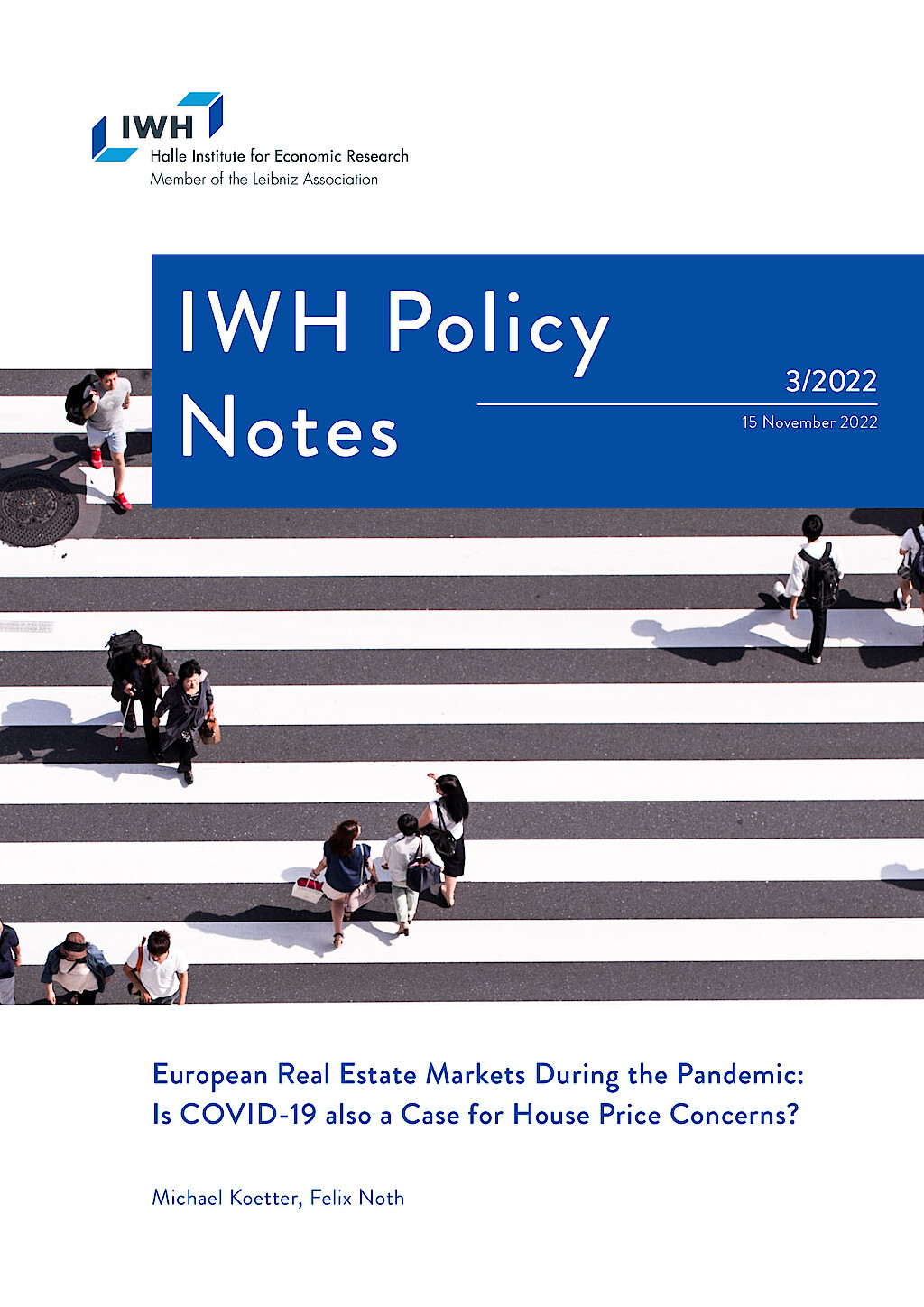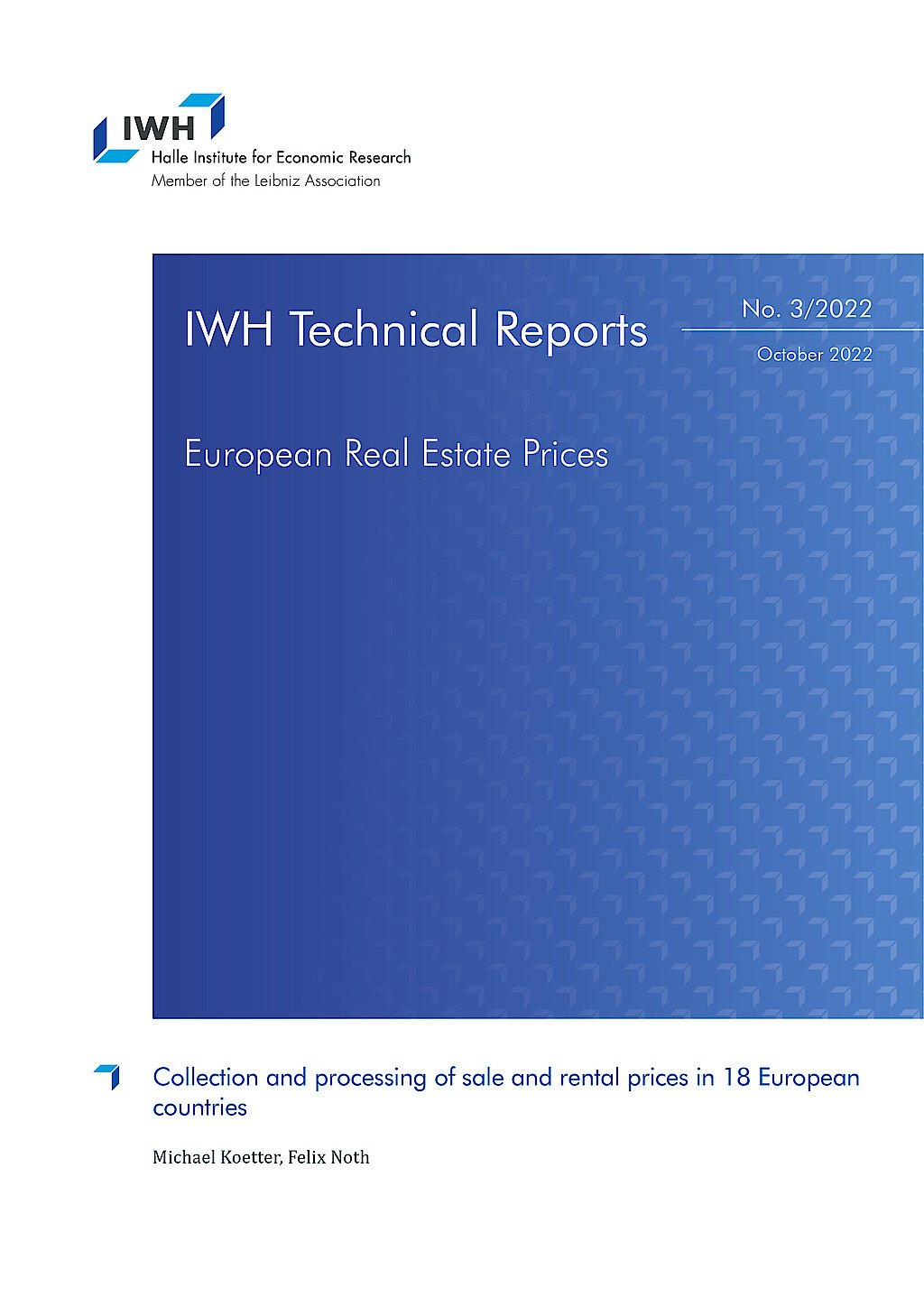
European Real Estate Markets During the Pandemic: Is COVID-19 also a Case for House Price Concerns?
We use a new database on European real estate purchase and rental prices – the IWH European Real Estate Index – to document the relationship between staggered COVID-19 dynamics and real estate prices in 14 EU countries between January 2020 and December 2021. For most countries, we find no statistically significant response of monthly purchase and rental prices due to an increase of regional COVID-19 cases. For the UK we find that more COVID-19 cases depressed both purchase and rental prices significantly, but the economic magnitude of effects was mild during this sample period. In contrast, rents in Italy increased in response to hiking COVID-19 cases, illustrating the importance to consider heterogeneous crisis patterns across the EU when designing policies. Overall, COVID-19 dynamics did not affect real estate values significantly during the pandemic, thereby mitigating potential financial stability concerns via a mortgage lending channel at the time.
30. November 2022
Inhalt
Seite 1
MotivationSeite 2
Literature on Pandemics and Real Estate MarketsSeite 3
Empirical Analysis and ResultsSeite 4
Conclusion, References and IWH European Real Estate Index (EREI) Auf einer Seite lesenMotivation
With the outbreak of the COVID-19 pandemic in January 2020, the European Union (EU) faced massive economic stress. According to the IMF, GDP contracted in the first year of the pandemic by 6.1% and European member states, the European Union, as well as the European Central Bank took numerous measures early on to counteract these adverse economic effects. However, the timing and intensity of pandemic shocks, for example reflected by infections and casualties, differed vastly across EU regions. Likewise, policy responses exhibited a staggered enactment pattern across countries and varied by extent and duration.
In this note, we shed light on the question whether and to what extent the contagion dynamics of the COVID-19 pandemic affected EU housing markets. The relationship between pandemic patterns and real estate markets is important from an economics perspective for two main reasons. First, real estate represents the most important component of non-financial household wealth, which in turn is a determinant of private consumption. If, for example, aggregate demand contractions due to curfews and increased labor income uncertainty exerted downward pressure on real estate prices, deteriorating household wealth might have contributed to the recessionary tendencies documented by the IMF. At the same time, other factors during the pandemic might have counteracting effects on household wealth. A lack of consumption opportunities during lockdowns, for example, could lead to higher saving rates and improve household wealth. Such counteracting forces are moreover likely to differ across EU countries, which highlights the importance of taking an EU-wide perspective when assessing real estate market developments during the COVID-19 pandemic.
Second, housing wealth is an important determinant of financial stability because real estate is pledged as collateral of mortgage loans and thus co-determines the value of these banking assets. In fact, mortgage lending and derivative securities account for a substantial share of total assets in the EU banking system. Historically, sudden, drastic, and unexpected corrections of real estate prices have been among the main reasons to stress banks’ asset values and thereby equity buffers, with the potential to spark systemic instability as witnessed during the Great Financial Crisis of 2008. At the same time, the EU Statistics on Income and Living Conditions (EU-SILC) indicates that the structure of national housing markets differs greatly across countries in the EU, for example in terms of homeownership rates that vary from around 40% (Switzerland) or 50% (Germany) to rates well above 80% in Norway and Poland.
Given structurally different EU real estate markets, the existence and the strength of a relationship between purchase price dynamics and pandemic developments might differ systematically across member states. It is important to document this heterogeneity in order to assess, for example, the potentially (in)efficient transmission of fiscal and monetary policies. More generally, the theoretical relationship between epidemics and real estate markets is a priori unclear. For example, mobility restrictions paired with home office obligations and home schooling rules may increase the demand for houses and flats since people need more space at home. At the same time, lockdown restrictions that impose part-time work on some employees and even put others completely out of work may depress aggregate demand. Given this ex ante ambiguity, we argue that empirical evidence is needed on both sales and rental real estate markets.
Establishing an empirical link between COVID-19 contagion dynamics and European real estate markets – either rentals or sales – is challenging though. In contrast to the US, no comprehensive collection of EU-wide real estate purchase or rental prices exist. One contribution of this note is to mobilize a new database on monthly asking prices in up to 18 EU member states’ real estate rental and sales markets: The IWH European Real Estate index is described in more detail in Koetter and Noth (2022). These novel data allow us to shed light on the effect of COVID-19 contagion dynamics and both sales and rental real estate markets in Europe.






